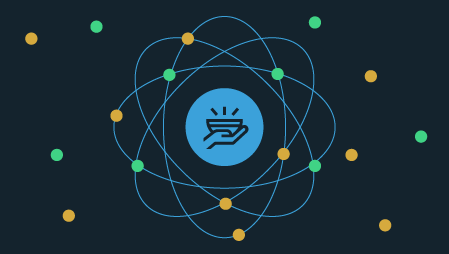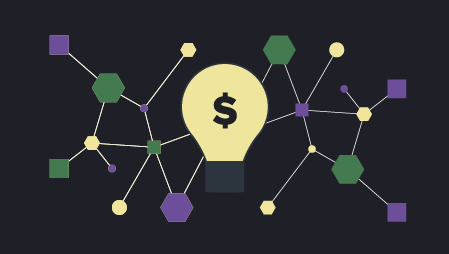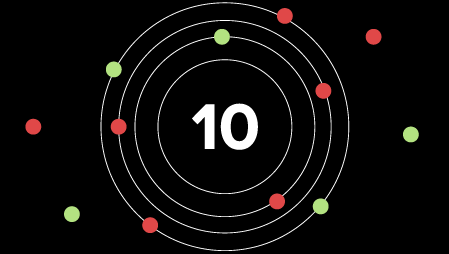Ready to learn Internet of Things? Browse courses like IIoT Applications for Machine Learning developed by industry thought leaders and Experfy in Harvard Innovation Lab.
Analytics have graduated to being prescriptive.

Earlier, I wrote about the value of prescriptive analytics. It’s the next wave of analytics. But it still falls short of ensuring successful IIoT applications.
Success requires a direct link between analytics and positive process outcomes. This requires a closed-loop process. One that enhances application intelligence based on analytic insights. This is what I call Prescriptive Applications.TM
Prescriptive Applications integrate analytics to dynamically change application content, access, and workflow.

Getting There Starts With A Focus On Outcomes
If something broke, fix it. But be aware that the process can be a complex journey. The good news is that process improvement is well understood.
The bad news is that it has been dependent on data quality as well as people- and time-intensive.

The Future Is Prescriptive Applications
Prescriptive applications combine 4-components:
- Knowing: notifying that something is broke, about to break or needs repair
- Doing: taking repair action
- Measuring: quantifying the success or failure of the repair action
- Learning: providing guidance for future events based on prior outcomes

1. Knowing
Knowing includes a clear and detailed description of the asset, equipment or plant. It also includes operational performance data, environmental measurements and diagnostics information. This is sometimes referred to as Descriptive Analytics.
Using patterns of behavior, predictive analytics creates notifications and alarms. This includes recommended maintenance schedules and the urgency/severity of certain behaviors (e.g. diagnostic faults).
2. Doing
Capturing repair details crosses multiple systems (even within a company). In some instances, it also involves multiple service providers.
Further, assets (based on equipment type or manufacturer) may have their own applications. And each asset may also have multiple applications:
-
IIoT/telematics
-
Service history
-
Warranty and recalls
-
Build details
These siloed applications results in poor data quality. But other critical information is still missing. It’s in faxes, emails, handwritten forms, and manual data entry.
Effective analytics requires high quality data. Capturing information (doing) in a structured format is key:
- Why was it done (what fault codes were active, was it scheduled or unscheduled, etc.)?
- When and where was it done?
- Who did the work?
- What was done?
- How long did it take?
- How much did it cost?
- What was the outcome?
Unfortunately lack of standards creates further data quality challenges. But that’s a topic for a later date.

3. Measuring
With work completed, what was the outcome?
Sometimes the outcome of a repair event are not immediately known.
-
Repeat repairs are a common problem in many industries.
-
Invoices with detailed technician stories are late.
-
Warranty filings may take even longer.
Ultimately, you need all the information. What worked, what didn’t, etc.
This allows you to measure outcomes:
-
Diagnosis and Repair Effectiveness (actions and outcomes)
-
Diagnosis and Repair Efficiency (time to understand/fix the problem)
-
Total Costs of Repair (Parts, labor as well as other related costs – rental, downtime, etc.)
>
4. Learning
Something broke (or is about to break). You worked to fix it. You measured outcomes.
Now let’s learn. Use the information to optimize service (process) delivery.
The use of technology to help businesses make better decisions about how to handle specific situations by factoring in knowledge of possible situations, available resources, what has happened in the past, and what is happening in the present. Prescriptive analytics works with predictive analytics — the use of statistics and modeling to determine future performance based on current and historical data — to improve business decisions despite uncertainty and changing conditions, and to help companies determine what action to take.
Unfortunately, these analytics insights are not tied into the application logic.
Let’s Tie It All Together
Prescriptive Applications provide a complete solution.
Changing application behavior (data access, content, and workflow) based on analytics and preferences.
In practice, a single recommended action may not be correct for all situations. Trade-offs exist. Time vs. money for instance.
So Prescriptive Applications enable a closed loop process to optimize outcomes based on integrated insights from analytics (descriptive, diagnostic, predictive, prescriptive):
- Captures all the data
- Manages outcome preferences
- Proactively notifies key team/ecosystem members
- Presents optimal actions
- Manages process
- Measures outcomes
Nirvana or Pipe Dream?
Artificial intelligence and machine learning technologies are improving. Analytics have graduated to being prescriptive. But a gap still remains.
How do we leverage these insights to directly affect outcomes? While IIoT faces many challenges, could Prescriptive Applications be a key missing piece?
I have yet to come across an application that pulls this all together. Have you?




